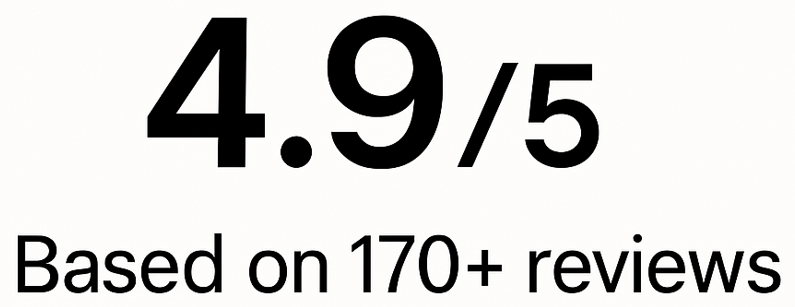Quick Summary
- Learn about simple interest and how it’s calculated for debt recovery.
- Use our simple interest calculator to determine interest owed to you.
- Discover practical applications for simple interest, like debt recovery.
- Find answers to common simple interest questions in our FAQs.
- Make informed financial decisions with our user-friendly tools.
Introduction to Simple Interest Calculator for Debt Recovery
Simple interest is a straightforward way to calculate the cost of borrowing money or the return earned from lending money. Unlike compound interest, which grows exponentially, simple interest is based solely on the original amount of money, known as the principal. This makes it especially useful for debt recovery, enabling you to determine precisely how much interest is owed over a given period.
Our simple interest calculator provides an easy way to calculate interest on unpaid invoices, loans, or debts. By entering just a few details, you can quickly see what you are owed, helping you manage debt recovery with accuracy and confidence.
Understanding Simple Interest
Simple interest is the amount paid for borrowing money or the return earned for lending it, calculated on the principal sum. Unlike compound interest, which accrues on both the principal and accumulated interest, simple interest grows linearly. This makes it ideal for applications like debt recovery, where you want to know exactly how much interest has accumulated over time, contrasting with the concept of compounding.
Example:
If you lend £1,000 at a 5% annual simple interest rate for two years, you will earn £50 each year. Unlike compound interest, where interest would be added to the original sum, the interest calculation remains fixed each year.
The Basics of Simple Interest for UK Users
When you put money into a savings account or loan money to someone, the interest rate shows how much money you will earn over time. This rate is usually shown as a percentage of the main amount.
For example, if you lend £1,000 at a 5% interest rate each year for two years, you will earn £50 in interest every year, influenced by the Bank of England base rate and your personal savings allowance. It’s important to know that the interest from the first year doesn’t get added to the main amount when figuring out the future interest for the second year.
This is what makes simple interest different. It’s a steady income based only on the original amount and the agreed-upon interest rate.
How Simple Interest Differs from Compound Interest
The main difference between simple interest and compound interest is how they grow over time. Simple interest stays the same. It is based only on the original amount of money. On the other hand, compound interest builds up like a snowball.
With compound interest, the interest you earn is added to your original amount. Then, for the next period, your interest is calculated using this larger amount. This process keeps happening, which helps your savings or investment grow much faster over time.
In summary, simple interest gives a steady and predictable return. Meanwhile, compound interest is often called the eighth wonder of the world because it can provide much larger returns in the long run.
How to Use Our Interest Calculator for Debt Recovery
Our simple interest calculator is user-friendly and efficient. Follow these steps to calculate interest on unpaid debts:
- Enter the Principal Amount: This is the original sum owed or lent.
- Input the Annual Interest Rate: Specify the agreed-upon rate of interest.
- Specify the Time Period: Indicate the time, typically in years.
- Click Calculate: Instantly see the total interest accrued.
Example Use Case: Suppose you are owed £2,500 on an unpaid invoice with a 4% annual interest rate. After three years, our calculator will show that you are owed £300 in interest (£2,500 x 0.04 x 3).
Practical Applications of Our Simple Interest Calculator
1. Debt Recovery for Unpaid Invoices
Easily calculate the interest owed on overdue payments to ensure fair compensation.
2. Personal Loans Between Friends or Family
Clarify the exact interest owed for informal lending agreements to avoid misunderstandings.
3. Business Contracts and Agreements
Ensure accurate calculations for interest accrued on outstanding balances or delayed payments in business settings.
4. Legal Claims and Settlements
Calculate precise interest amounts owed as part of legal claims or settlements, providing transparency and compliance.
Calculating Simple Interest in the UK
The formula for calculating simple interest is:
Simple Interest = Principal x Rate x Time
Example Calculation:
If you loan £5,000 at an annual rate of 3% for four years, the calculation is:
£5,000 x 0.03 x 4 = £600 (total simple interest).
Key Components of Simple Interest Calculation
To ensure accuracy in your simple interest calculations, it’s crucial to understand the three fundamental components:
- Principal Sum: This refers to the initial amount of money borrowed or lent, serving as the foundation for all interest computations.
- Rate of Interest: Expressed as a percentage, this determines the speed at which interest accrues over time. A higher rate naturally leads to faster accumulation of interest.
- Time Period: The duration for which the principal sum is borrowed or invested plays a vital role. As time extends, the amount of simple interest proportionally increases.
Component | Description |
Principal Sum | The original amount of money borrowed or lent. |
Rate of Interest | The percentage at which interest accrues on the principal. |
Time Period | The duration (in years) for which interest is calculated. |
Step-by-Step Guide to Using Our Simple Interest Calculator for Debt Recovery
Navigating debt recovery can seem hard, but our interest calculator makes it easy to find out how much interest you owe.
- Input the Principal: Start by putting in the original amount of money that you borrowed or lent.
- Enter the Annual Interest Rate: This is the fixed percentage you agreed on when you took the loan or debt.
- Specify the Time Period: Indicate how long, in years, the simple interest should be calculated.
- Click Calculate: The calculator will quickly show you the total simple interest that has built up over that time. This will help you see the amount you owe clearly.
This easy tool simplifies debt recovery. It helps you get accurate numbers and have better talks about finances.
Practical Applications of Our Simple Interest Interest Calculator for Debt Recovery
The uses of our simple interest calculator and savings calculator go beyond just theory. For example, suppose a friend takes a loan of £2,000 with a simple interest rate of 3% per year for two years. With our calculator, you can easily see that your friend owes you £120 in interest after the higher amount calculated over the number of years specified. This helps both you and your friend understand the details clearly.
This tool is useful for many situations. It works well for personal loans and also for business deals. By finding the exact interest amounts, you can make sure everyone is treated fairly and knows what to expect. This way, you can handle financial matters with confidence.
Conclusion
Understanding simple interest is important for recovering debts and planning your money. With our easy-to-use calculator, people in the UK can quickly find out interest amounts. Knowing the difference between simple and compound interest is key to making smart money choices. Follow our simple guide to get the most out of our calculator for personal or business needs.
Frequently Asked Questions About Our Simple Interest Calculator
What is simple interest and how is it calculated?
Simple interest is the amount of interest you earn on a principal sum over a set time period. To find it, you take the principal sum and multiply it by the interest rate and the time period. This will give you the total amount of interest.
What is the Formula for Calculating Simple Interest?
The formula for simple interest is easy to understand: Simple Interest = (Principal Sum x Rate of Interest x Time Period). This formula shows how the principal sum, rate of interest, and time period connect to determine the simple interest.
Can a simple interest calculator be used for both personal and business financial calculations?
Sure! Simple interest calculators help with personal and business finances. They are useful for things like getting back debt, figuring out interest on loans, or looking at basic savings plans.
Can I Calculate Simple Interest Daily Instead of Annually?
Simple interest is usually calculated each year. However, you can calculate it daily if needed. To do this, take the annual interest rate and divide it by 365. This will give you the daily rate. Then, multiply this rate by the principal sum and the number of days to find your daily interest.





